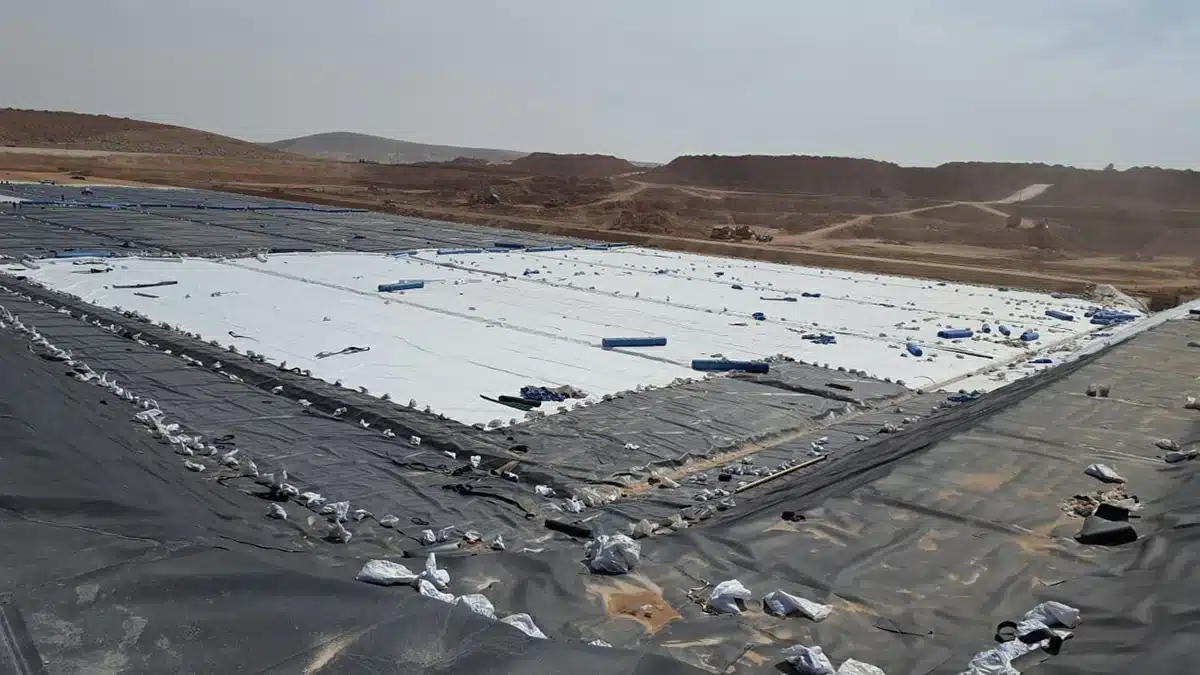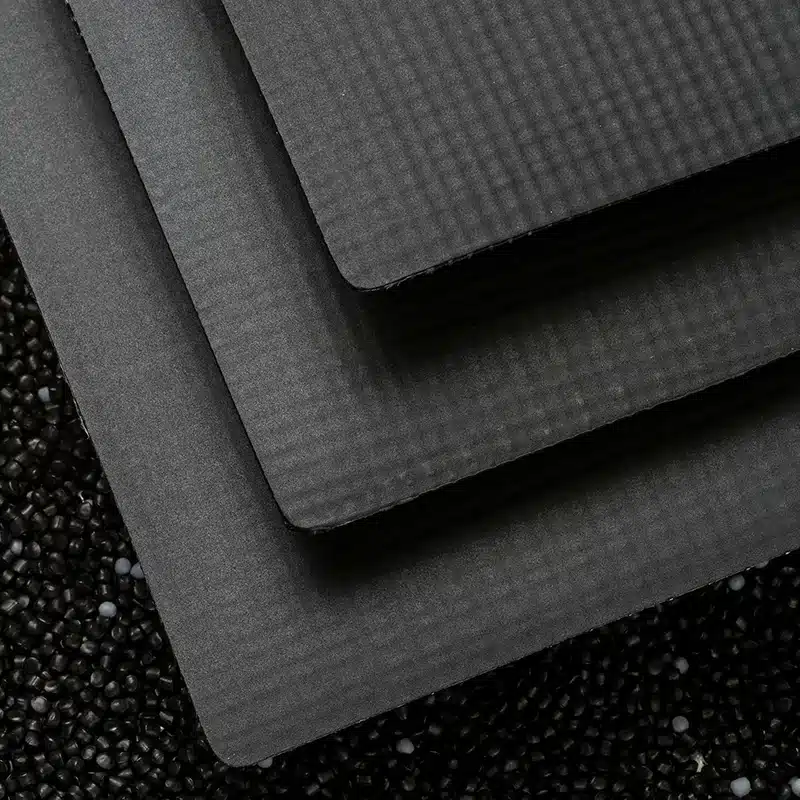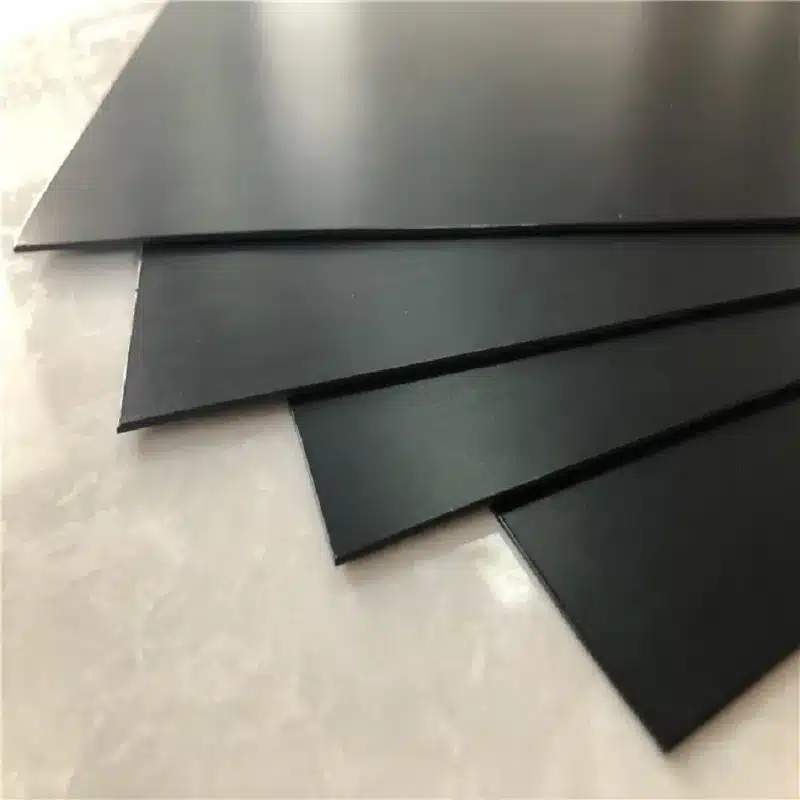+86-159 9860 6917
info@geofantex.com
geofantex@gmail.com
+86-400-8266163-44899
Geomembranes are critical components used in environmental engineering, particularly at landfill sites where they serve as barriers to prevent leachate migration and gas emissions. The durability and longevity of these geomembrane covers are vital to maintaining environmental safety and efficiency in waste management. This article explores the lifespan of geomembrane covers used in landfill sites, factors affecting their durability, and how they can be maintained to extend their service life.
What is a Geomembrane and What Role Does it Play in Landfills?
A geomembrane is a synthetic liner or barrier used to control fluid movement in environmental and civil engineering applications. In landfill sites, geomembranes are a critical component of the liner system, designed to prevent contaminants from escaping into the surrounding environment.
Key Roles of Geomembranes in Landfills:
- Primary Barrier to Contaminants: Prevents leachate—a liquid formed during waste decomposition—from seeping into soil and groundwater, protecting the environment and public health.
- Groundwater Protection: Creates an impermeable layer that prevents hazardous substances from migrating downward, especially near water tables or sensitive ecological areas.
- Gas Management: Works with gas collection systems to safely contain and direct landfill gases like methane for treatment or energy recovery.
- Structural Integrity: Supports the stability of the landfill by containing waste and leachate, reducing risks of slope failures or structural damage.
- Durability and Longevity: Designed to withstand harsh landfill conditions, including chemical exposure, physical stress, and temperature fluctuations, ensuring long-term performance.
Geomembranes are essential in modern waste management, serving as impermeable barriers that protect groundwater, manage landfill gases, and maintain the structural stability of landfills. Their use ensures environmental safety, regulatory compliance, and the efficient operation of landfill sites.

How Long Can a Geomembrane Cover Typically Last?
The lifespan of a geomembrane cover can vary significantly depending on several factors, including the material used, environmental conditions, and the specific application. However, here’s a general overview:
- Material Type: The material of the geomembrane is one of the most critical factors in determining its lifespan. High-density polyethylene (HDPE) geomembranes, for example, are known for their durability and can last 20-30 years or more under ideal conditions. Other materials like PVC or EPDM might have different lifespans.
- Environmental Conditions: Exposure to UV radiation, temperature fluctuations, chemical exposure, and physical stress can all impact the lifespan of a geomembrane. In harsh environments, the lifespan may be reduced.
- Installation Quality: Proper installation is crucial to ensure the longevity of a geomembrane. Poor installation can lead to defects or premature failure.
- Maintenance: Regular inspection and maintenance can help extend the lifespan of a geomembrane by identifying and repairing any damage before it becomes critical.
In general, with proper selection, installation, and maintenance, a geomembrane cover can last anywhere from 20 to 50 years or more. HDPE geomembranes, in particular, are known for their long-term durability and resistance to environmental stressors.
What Factors Affect the Longevity of Geomembrane Covers?
The durability of geomembrane covers is influenced by several factors:
- UV Radiation: Prolonged exposure to sunlight can degrade the materials unless they are properly stabilized against UV radiation.
- Chemical Exposure: Interaction with harsh chemicals in the waste can degrade the geomembrane faster.
- Physical Stress: Mechanical pressures, punctures, or tears from the overlying or underlying materials can compromise the integrity of the cover.
- Installation Quality: Poor installation can lead to early failures, such as leaks or tears.
- Environmental Conditions: Temperature fluctuations and extreme weather conditions can also affect the lifespan of geomembrane covers.
How Can the Life of a Geomembrane Cover be Extended?
To maximize the lifespan of a geomembrane cover, several best practices should be followed:
- Proper Installation: Ensure that the geomembrane is installed by skilled technicians under suitable environmental conditions.
- Regular Inspections: Conduct periodic inspections to identify and repair damages like tears or weak spots.
- Protective Measures: Use protective layers like geotextiles to shield the geomembrane from physical damage.
- Quality Materials: Opt for high-quality geomembrane materials that are suited for the specific type of landfill and its contents.
- UV Protection: Consider covering the geomembrane with UV inhibitors if it is exposed to significant sunlight.
The lifespan of a geomembrane cover at a landfill site is influenced by multiple factors but typically ranges from 10 to 30 years. By understanding the roles and types of geomembranes, acknowledging the factors that impact their durability, and implementing strategies to extend their life, landfill operators can ensure effective and long-lasting waste containment solutions. Regular maintenance and proactive management are key to maximizing the utility and effectiveness of geomembrane covers in preserving environmental safety.



Get Free Sample
We’ll respond as soon as possible(within 12 hours)






















